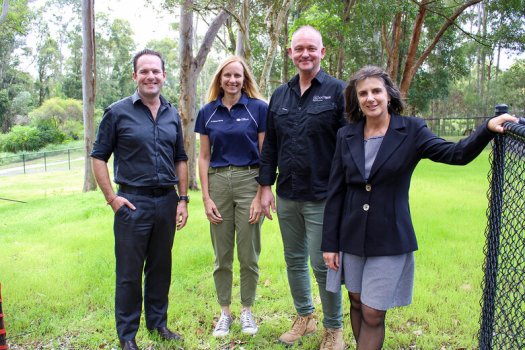
A Queensland council is working with a local textile recycling company to see if a new type of mulch made from cotton fibres can improve grass coverage.
The trial seeks to test if the ‘hydromulch’, which is made from a blend of cotton fibres, grass seed and fertiliser, can increase grass coverage at a local park in the Logan City LGA by increasing soil nutrient levels and retaining moisture.
It’s hoped the trial could validate a new circular use for cotton-based materials that would otherwise end up in landfill.

So far, the results have been encouraging.
The hydromulch was applied to a section of ground in a dog-off leash area at the park in late March, while another section was reserved for Council’s regular turf growth procedure, so results could be compared.
Logan City says the hydromulch site is now covered with a thick layer of grass that looks ‘considerably healthier’ than the comparison site.
Scientists from the company have also recorded higher levels of moisture retention in recycled mulch patch, Council says.
Reducing landfill
City of Logan Mayor Jon Raven says Council is proud to support innovative local companies and new solutions to reduce landfill waste.
“Encouraging local businesses to explore new ideas is a priority for Council, especially when those ideas help reduce waste heading to landfill or create new revenue streams,” Cr Raven said in a statement.
“This is the first technology in the world that breaks textiles down so they can be completely recycled – that’s good for our community, good for our economy and good for the environment.”
The ‘hydromulch’ is supplied by recycler BlockTexx, which uses processes that chemically separate natural cotton fibres from synthetic polyester in items like clothes and bedsheets.
The cotton can then be reused in a cellulose clay that can be added to mulch and building materials. The raw polyester can also be used.
“Cotton breaks down to cellulose, which contains about 43 per cent embedded carbon and is the building block to plants and animals,” BlockTexx co-founder Graham Ross says.
“By combining that cellulose into a hydromulch mix of fertiliser, grass seed and water, we are effectively taking what nature grew in the first place and putting it back into nature.
“(This method) is incredibly important not only for our environment, but also for product development. Recycling is one thing, but resource recovery – that’s the future.”
Final results from the trial are expected in late May.
Main image: City of Logan Mayor Jon Raven (right) and BlockTexx co-founder Graham Ross
at the trial site in Underwood Park (Image supplied).
Comment below to have your say on this story.
If you have a news story or tip-off, get in touch at editorial@governmentnews.com.au.
Sign up to the Government News newsletter